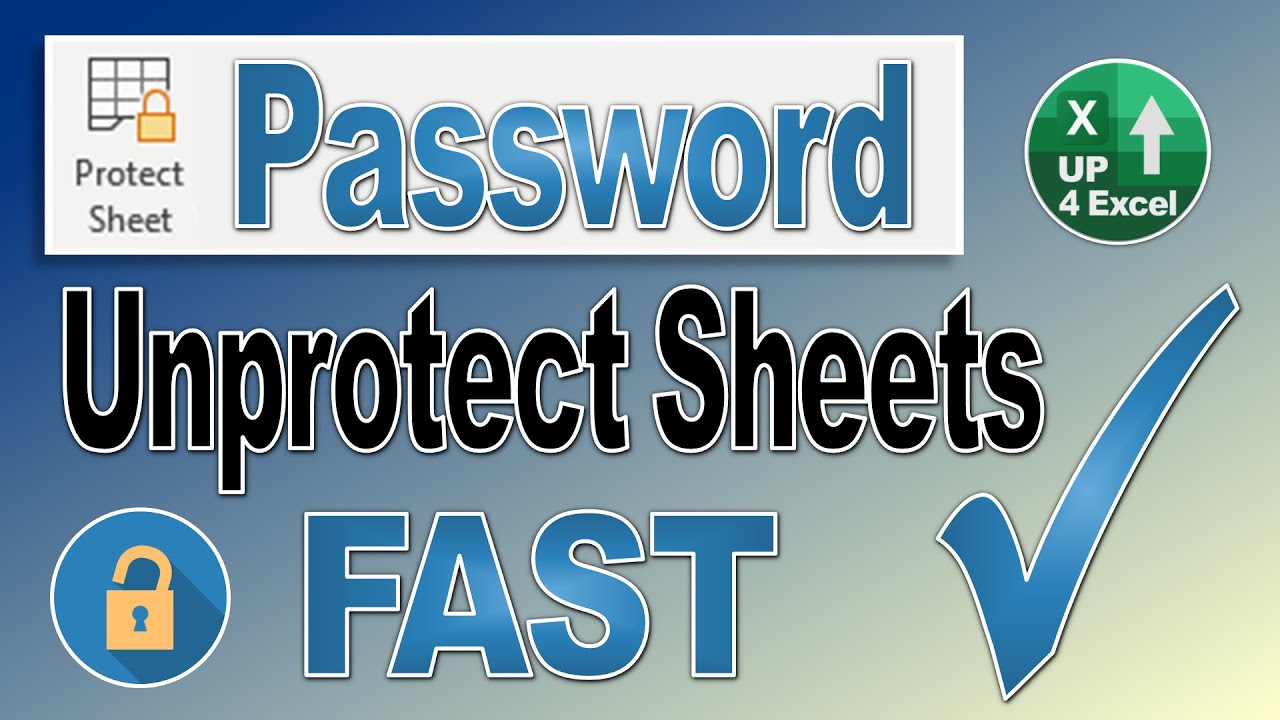Unlock Excel Sheets Instantly: No Password Needed

Have you ever received an Excel sheet with vital information, only to find it's been password-protected? Or perhaps you've forgotten the password to your own spreadsheets? While Excel’s password protection is a robust way to secure sensitive data, there are legitimate reasons why someone might need immediate access without a password. This blog post will guide you through several methods to unlock Excel sheets effortlessly.
Why Bypass Excel Password?

Excel sheets are often password-protected for various reasons, such as:
- Protecting sensitive information
- Preventing accidental changes to critical data
- Controlling who can access or modify the file
However, there are situations where you might need to bypass the password:
- The person who set the password has left the organization
- You’ve lost or forgotten your own password
- Need to audit or inspect the data without altering the file
Understanding the reasons for unlocking an Excel sheet helps in choosing the most appropriate method.
Method 1: Excel’s Native Method

If the Excel file has a less robust password, Excel itself provides a way to unlock it:
- Open the protected Excel file
- Press ALT + F11 to open the VBA editor
- In the VBA editor, go to Insert > Module to add a new module
- Copy and paste the following code into the module:
Sub PasswordBreaker()
Dim i As Integer, j As Integer, k As Integer
Dim l As Integer, m As Integer, n As Integer
Dim p As Integer, q As Integer
Dim curChar As String
Dim pwdList As String
On Error Resume Next
For i = 65 To 66: For j = 65 To 66: For k = 65 To 66
For l = 65 To 66: For m = 65 To 66: For i1 = 65 To 66
For p = 65 To 66: For q = 65 To 66: For r = 65 To 66
For s = 65 To 66: For t = 65 To 66
curChar = Chr(i) & Chr(j) & Chr(k) & _
Chr(l) & Chr(m) & Chr(i1) & Chr(p) & _
Chr(q) & Chr(r) & Chr(s) & Chr(t)
If curChar = "AA" Then
MsgBox "Password Found: " & curChar
Exit Sub
Else
Workbooks(1).Unprotect Password:=curChar
If Err.Number = 0 Then
MsgBox "Password Found: " & curChar
Exit Sub
End If
End If
Next t: Next s: Next r: Next q: Next p: Next i1: Next m: Next l: Next k: Next j: Next i
pwdList = pwdList & curChar & vbCrLf
Next
MsgBox pwdList
End Sub
Run this macro by pressing F5. If your password is within the complexity that this method can handle, Excel will unlock the sheet for you.
Notes on the Native Method:

🔐 Note: This method may not work on highly secure passwords or newer Excel versions. Also, running macros from unknown sources can be risky, so ensure the macro comes from a trusted source.
Method 2: Utilizing Online Tools

If the VBA method isn’t feasible, online tools can be an option. Here’s how to use them:
- Go to an online Excel password recovery tool website.
- Upload your protected Excel file.
- Click on the ‘Recover’ or ‘Unlock’ button.
- Some tools might ask for a small fee, while others might provide the service for free with limitations.
These tools work by brute-forcing or using known password patterns. Remember, while convenient, online tools:
- Can expose your data to third parties
- May not work with complex passwords or newer versions of Excel
- Should only be used for files where you have legal rights to access
Notes on Online Tools:

🔒 Note: Use reputable tools and never upload sensitive data to unverified sites. Your security and data privacy are paramount.
Method 3: Manual Workaround

If you have some knowledge of Excel’s functions, there’s a manual way to bypass sheet protection:
- Create a new sheet in the same workbook
- In the new sheet, enter the formula =“Sheet1!A1” in cell A1 and replace ‘Sheet1’ with your protected sheet’s name
- Drag the fill handle to extend the formula to all cells
- Now, you can access all the data from the protected sheet by copying from this new sheet
Notes on Manual Workaround:

🔑 Note: This method copies data but does not actually unlock the protected sheet. It’s useful for viewing data but not for editing or unlocking the sheet entirely.
Additional Considerations

While unlocking Excel sheets can be necessary, consider the following:
- Respect intellectual property rights and data privacy laws
- Use these methods for legitimate purposes only
- Understand the implications of circumventing Excel’s security features
To wrap up, whether you choose Excel's native VBA approach, online tools, or manual workarounds, the key is to proceed with caution and responsibility. Unlocking Excel sheets can be straightforward, but ethical and legal considerations should always guide your actions. The importance of securing sensitive data cannot be overstated, and while these methods provide access, they also remind us of the importance of maintaining robust password protection practices.
Can I unlock any Excel sheet with these methods?

+
Not all Excel sheets can be unlocked with the methods provided. Complex passwords or newer versions of Excel might be more resistant to these techniques. Always consider the legal and ethical aspects before attempting to unlock a sheet.
Is it legal to unlock Excel sheets without permission?

+
Unlocking an Excel sheet without permission can be illegal if it violates data protection laws or breaches privacy. Ensure you have the right to access or need to unlock the file for legitimate reasons.
Are online tools safe to use for unlocking Excel files?

+
Using online tools can be risky. Reputable tools might be safe, but always read reviews, understand their privacy policy, and only upload files with data you’re willing to potentially expose.



